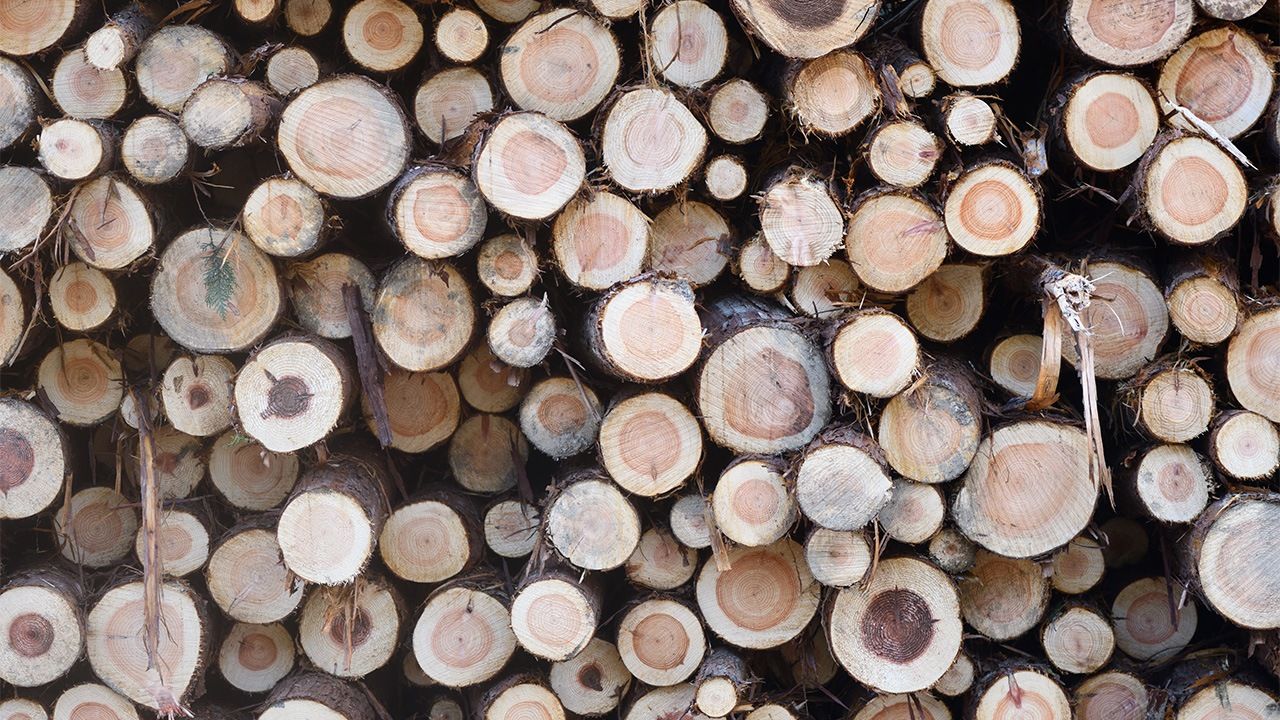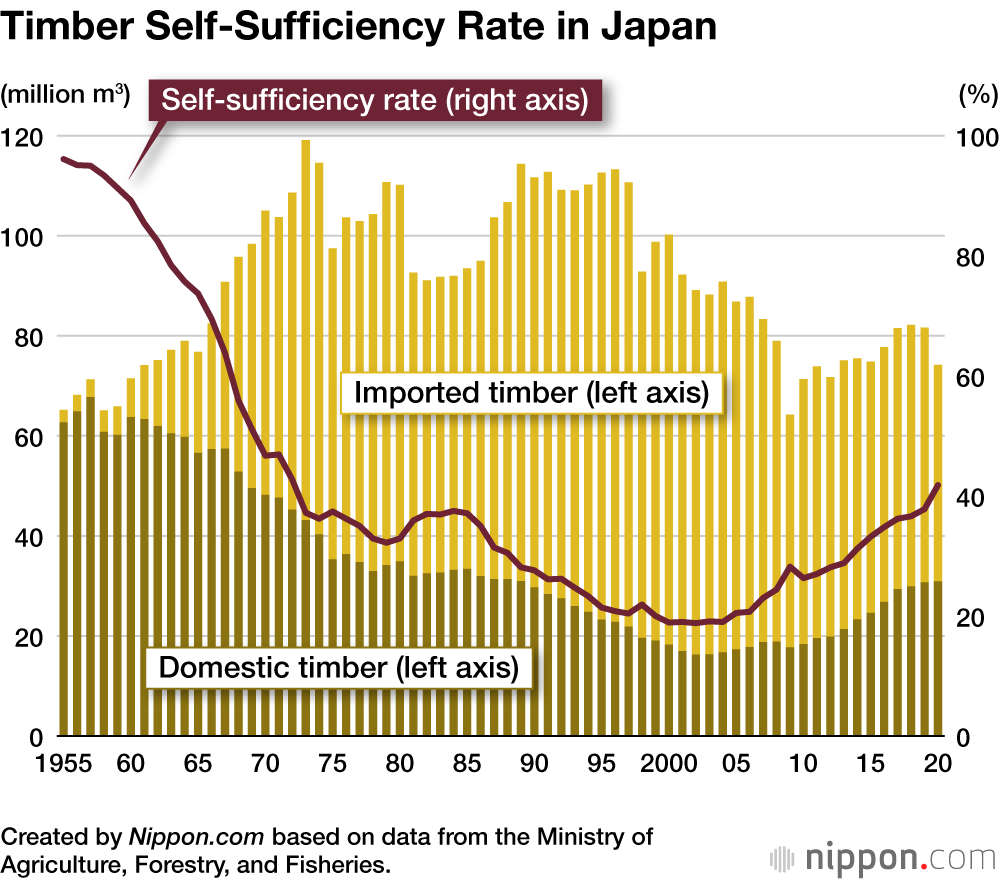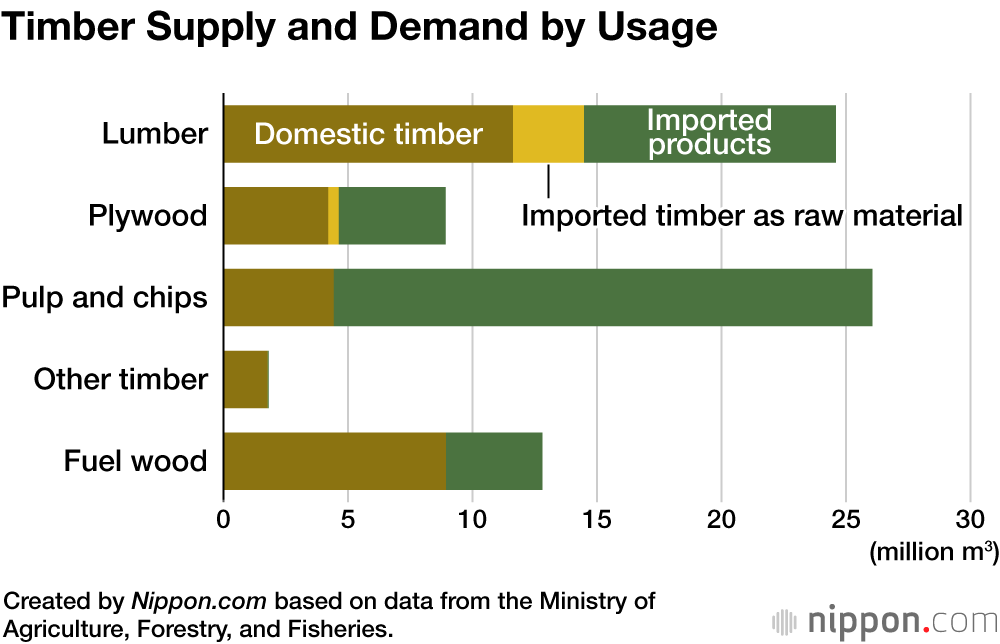
Japan’s Timber Self-Sufficiency Exceeds 40% for First Time in 50 Years
Economy Environment- English
- 日本語
- 简体字
- 繁體字
- Français
- Español
- العربية
- Русский
According to the Ministry of Agriculture, Forestry, and Fisheries’ annual report on forests and forestry in Japan, the timber self-sufficiency rate, which indicates the proportion of domestic timber consumed in Japan, reached 41.8% in 2020.
In 1955, it stood at 96.1%, but after that the rate dropped steadily due to an increase in cheap imported timber and reached a record low of 18.8% in 2002. Artificial forests, planted as part of government measures to promote domestic timber, have just recently become ready to be harvested. Increased demand for fuel, including wood chips used for biomass power generation as part of a decarbonization shift, has also boosted the supply of domestic timber. In the ten years since 2011, the self-sufficiency rate has risen continuously. The last time the rate exceeded 40% was 48 years ago in 1972.
Total demand for timber in 2020 was 74.4 million cubic meters. The COVID-19 pandemic brought a decrease in demand for housing, so this total figure was down 7.5 million cubic meters from 2019.
(Originally published in Japanese. Banner photo © Pixta.)

